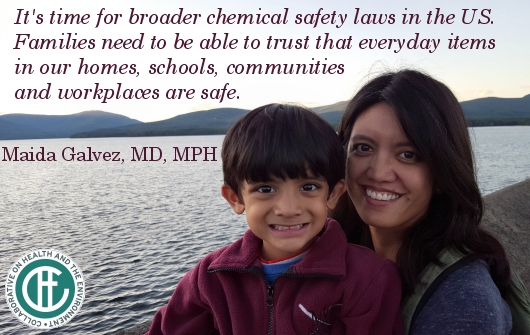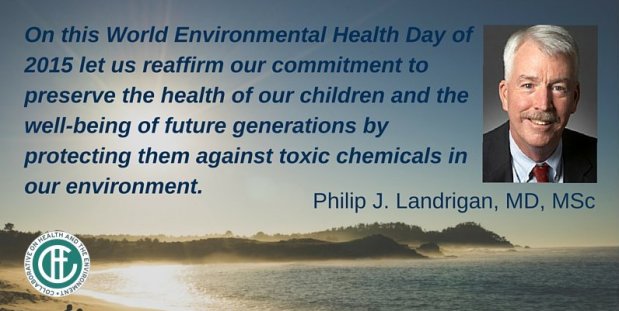Elise Miller, MEd
Director
The Endocrine Society is certainly not a “household” name – nor an organization you may have even thought about before. But no one concerned about public health and the environment can overestimate the significance of The Endocrine Society’s new scientific report stating that exposures to endocrine disrupting chemicals (EDCs) are a growing threat to human health and well-being (download the report from the Endocrine Society website). EDCs are synthetic chemicals found in everyday products—from lotions to can linings—that can disrupt the hormonal messaging system that choreographs the development and maintenance of the body’s biological systems.
The Endocrine Society’s statement, based on a thorough analysis of the peer-reviewed data from animal and human studies, indicates that exposures to EDCs are contributing to a wide range of public health concerns, including various cancers, reproductive health problems, diabetes, obesity, heart disease and neurological disorders. Of particular concern, the report states, are minute exposures to EDCs in the womb and early childhood during critical windows of development, which can have lifelong adverse health impacts.
The statement also emphasizes that disease prevention is predicated on reducing exposures to EDCs, and asserts that “Our chemical policies at the local, state and national levels, as well as globally, need to be formulated, financed and implemented to ensure the best public health.” In addition, the report explicitly states that “the precautionary principle is critical to enhancing health.”
This report, of course, is not the first time these issues have been raised – the seminal book, Our Stolen Future, co-authored by Theo Colborn, Dianne Dumanoski, and John Peterson Myers and published in 1996, clearly lays out the accumulated science over 50 years related to these concerns. However, this is the first time such a highly respected international medical society – an organization of over 14,000 members in 100 countries – has taken such an unqualified stance on EDCs.
Given the stature of The Endocrine Society, this groundbreaking statement sends a clear signal to other health professionals as well as policymakers that we simply cannot ignore environmental contributors to a wide range of diseases and disabilities. As members of CHE, we can bring this message to our own constituencies. For some, that might mean urging a health-related professional society to publicly endorse The Endocrine Society’s statement or develop its own resolution highlighting these findings. For others, this might mean using this statement to press for chemical policy reform on state, national and international levels.
Whatever you choose to do, know that this statement is not just another inscrutable scientific treatise (see a related New York Times column: “It’s Time to Learn From Frogs“), but a call to action to improve the health of our families and communities as well as future generations. To learn more about the implications of this statement and other ways the precautionary principle is being invoked and implemented, please join us for our next CHE Partner call, Precaution’s Reach: A Principle in Action, on July 28th.
 written by Maida Galvez, MD, MPH
written by Maida Galvez, MD, MPH


 Children’s health and the environment is a most fitting topic for World Environmental Health Day 2015. Children are the most vulnerable among us to degradation of the environment. Any actions that we take to protect infants and children against health threats in the environment will protect not only children, but will also safeguard all of us and preserve the health and well-being of future generations.
Children’s health and the environment is a most fitting topic for World Environmental Health Day 2015. Children are the most vulnerable among us to degradation of the environment. Any actions that we take to protect infants and children against health threats in the environment will protect not only children, but will also safeguard all of us and preserve the health and well-being of future generations.